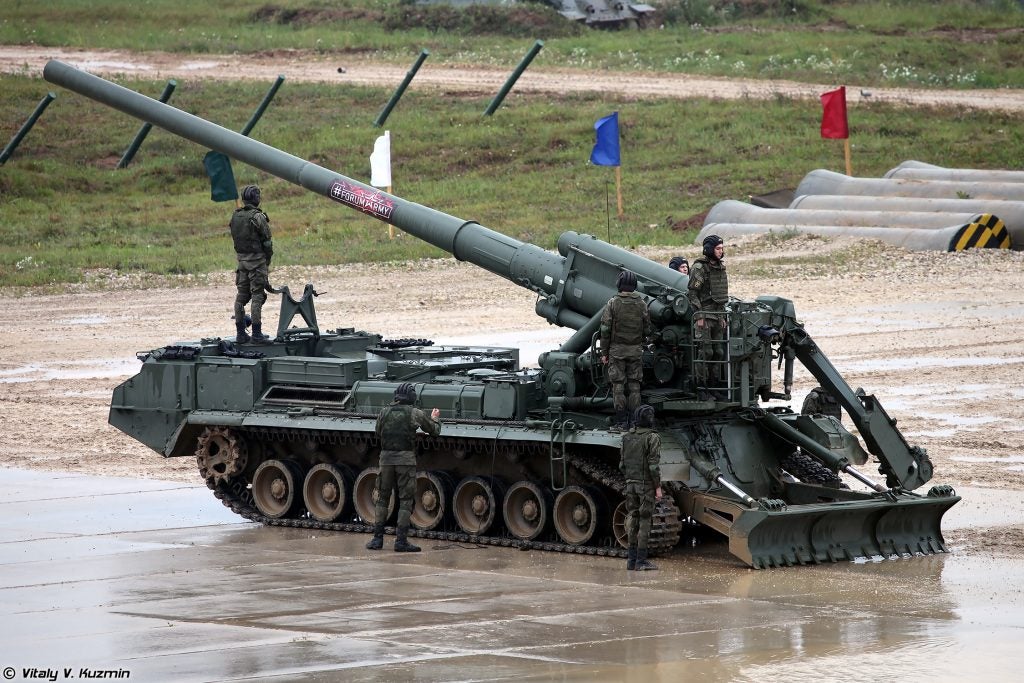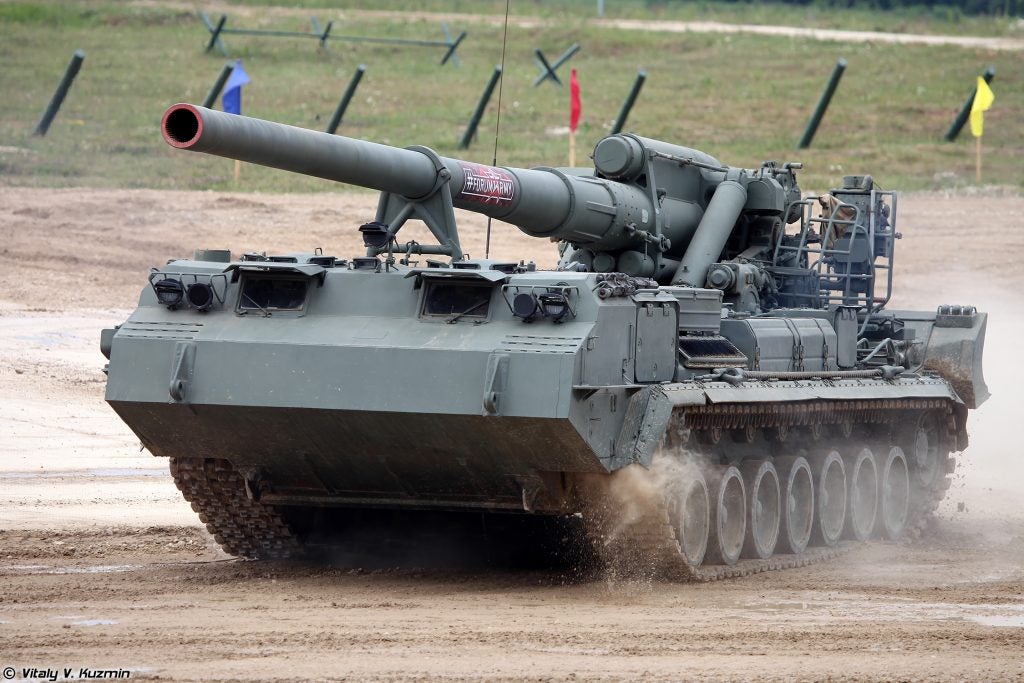Modernized Artillery for Russian Forces in Kaliningrad
Izvestia reports that the 11th Army Corps of the Russian Baltic Fleet Coastal Forces are to receive modernized 2S7M Malka self propelled howitzers, citing unnamed sources in Baltic Fleet headquarters. Zoopark-1 counter-battery radars will be delivered as well, to facilitate the use of the self-propelled howitzers in the counter-battery fire role.
According to the source, the delivery of both systems is intended to begin at the end of 2019 or the start of 2020. When asked for comment by Izvestia, military expert Dmitry Boltenkov stated that the first unit to receive the self propelled howitzers will likely be the 244th Guards Artillery Brigade based in Kaliningrad, the Russian Baltic enclave.
Michael Kofman, senior research scientist at the Centre for Naval Analyses, told Izvestia that the howitzers can provide additional fire support in the event of the existing Baltic Fleet anti-ship missile defenses exhausting their missile supplies during a conflict. According to him, the Zoopark counter-battery radars can also be used to calculate and correct artillery fire if contested airspace prevents Russian artillery targeting drones from being used. Russia has moved towards using drones to direct artillery fire, with extreme effectiveness against Ukrainian forces in the Donbass before Ukrainian forces began employing tactics to counter drone detection.

The 2S7M is the largest caliber self propelled howitzer currently in service with the Russian military, capable of firing 203mm shells up to 37 kilometers away, or 55 kilometers with rocket assisted projectiles. While the original 2S7 Pion (Peony) was intended to fire tactical nuclear shells, making accuracy less crucial, modernization to the Malka standard has improved its ability to employ conventional munitions.
The Russian military originally retired its 2S7M fleet and disbanded heavy artillery brigades using them following the 2008 military reforms, but has been working to reactivate and modernize them since 2018 following combat experience in Ukraine and Syria that suggested that smaller caliber artillery was insufficient to destroy hardened positions. The modernizations include a modern communications system and drive-train enhancements. Efforts to restart production of 203mm high explosive shells for it are underway as well.
The delivery of these self-propelled howitzers and counter-battery radar is the latest in a steady buildup of Russian military capabilities in Kaliningrad following the 2014 annexation of Crimea. This buildup, driven by Russian fears of a Western retaliatory annexation of the exclave, has instead further motivated NATO presence in the Baltics and Poland, with the Suwalki Gap (between Kaliningrad and Belarus) being an area of particular concern to both Russia and NATO.

